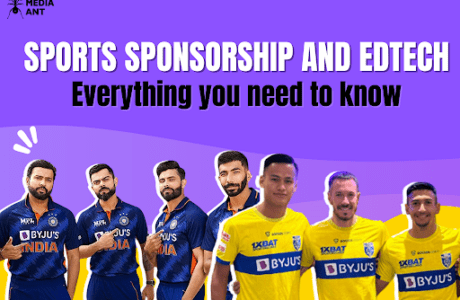In the ever-evolving realm of sports marketing, staying ahead requires a keen eye on the technological horizon. The fusion of sports and cutting-edge technologies is not just reshaping the playing field but also revolutionizing how teams, brands, and fans interact. In this deep dive, we’ll explore the game-changing impact of emerging technologies in sports marketing, unraveling the trends, opportunities, and examples that define this transformative landscape.
This journey into the future is not a solitary sprint but a collective marathon, where Augmented Reality (AR), Virtual Reality (VR), Artificial Intelligence (AI), and a host of other cutting-edge technologies are not just spectators but active participants in the narrative of sports marketing. As we dive into the playbook of these advancements, this exploration promises to uncover not just the strategies for success but the very essence of what it means to be a fan, a player, and a brand in the ever-evolving game of sports marketing. Get ready to witness the unfolding chapters of a thrilling saga—Navigating the Future of Sports Marketing with Emerging Technologies. The whistle has blown, and the game is on!
Augmented Reality (AR): Elevating Fan Engagement
Augmented Reality (AR) is seamlessly blending the virtual and physical worlds, and sports marketing is no exception. From enhancing in-stadium experiences to creating interactive campaigns, AR is redefining fan engagement.
In the realm where the exhilarating worlds of sports and technology collide, Augmented Reality (AR) emerges as a game-changer, not just on the field but within the dynamic arena of advertising. As we embark on this journey where reality intertwines seamlessly with the virtual, AR transcends the traditional boundaries of sports advertising, offering an immersive and unparalleled experience for both fans and brands.
Picture this: a fan, sitting comfortably in their living room, is not merely a spectator but an active participant in the game, thanks to AR. Jerseys come to life, statistics hover mid-air, and interactive campaigns unfold before their eyes. Augmented Reality has transcended the conventional, ushering in an era where sports advertising is not just seen but experienced.
In this exploration of Augmented Reality in Sports Advertising, we delve into the innovative ways this technology is redefining fan engagement, brand visibility, and the very essence of the sports-watching experience. From the roar of the crowd to the buzz of digital excitement, AR is elevating sports advertising to new heights, transforming passive viewers into enthusiastic participants.
Welcome to a new era, where the boundary between the virtual and the tangible blurs—Augmented Reality in Sports Advertising.
Examples:
Snapchat AR Lenses for NBA: Snapchat’s AR lenses allow users to don virtual NBA team jerseys, bringing the spirit of the game into their living rooms.
AR-Enhanced Stadium Tours: Teams like FC Barcelona are using AR to offer fans immersive stadium tours, providing an up-close look at historical moments and behind-the-scenes action.
Virtual Reality (VR): Immersive Experiences Beyond Boundaries
Virtual Reality (VR) is transporting fans to the heart of the action, providing 360-degree views and an unparalleled sense of immersion. In the ever-evolving landscape of sports advertising, Virtual Reality (VR) emerges as a transformative force, transcending the boundaries between the physical and the digital. As we step into this immersive realm, VR is not merely a technological innovation but a gateway to a new era of fan engagement, brand storytelling, and sports advertising that transcends the confines of traditional mediums.
Imagine a fan transported from their living room to the front row of a stadium, where every cheer, every play, and every heartbeat resonates as if they were physically present. Virtual Reality in sports advertising achieves the extraordinary, offering audiences an unparalleled, interactive experience that blurs the lines between spectator and participant.
In this exploration of Virtual Reality in Sports Advertising, we embark on a journey through the immersive landscapes where brands are no longer just seen but experienced. From virtual stadium tours to live-streamed events, VR becomes the catalyst for a revolution in how sports stories are told, connecting fans with their favorite teams and athletes in ways previously unimaginable.
Examples:
Wimbledon VR Broadcast: Wimbledon embraced VR with a dedicated app offering users a courtside view, revolutionizing how fans experience the prestigious tennis tournament.
NFL VR Series: The NFL produced a VR series providing an inside look at players’ lives, fostering a deeper connection between fans and athletes.
Artificial Intelligence (AI): Personalization and Predictive Insights
Artificial Intelligence (AI) is the analytical powerhouse behind the scenes, shaping personalized fan experiences, predicting trends, and optimizing marketing strategies. In the fast-paced realm of sports advertising, where precision and personalization are key, Artificial Intelligence (AI) emerges as the strategic coach, guiding brands towards unparalleled success. As we navigate the dynamic landscape where technology and athleticism intersect, AI becomes the driving force behind a new era of targeted campaigns, data-driven insights, and fan engagement that transcends the ordinary.
Imagine a world where every advertisement is tailored to the unique preferences of each fan, where predictive analytics anticipate their next move, and where the game is not just watched but actively shaped by the audience. Artificial Intelligence in sports advertising is not merely a tool; it’s the playbook that unlocks a realm of possibilities, transforming the way brands connect with their audiences.
In this exploration of AI in Sports Advertising, we embark on a journey through algorithms and analytics, unveiling how AI enhances the fan experience, optimizes marketing strategies, and elevates brand visibility. From personalized content recommendations to predictive analytics shaping campaign success, AI is the catalyst for a revolution in how sports stories are told and consumed.
Examples:
IBM’s Watson in Tennis Analytics: IBM’s Watson analyzes player statistics, match data, and social media sentiments, providing insightful analytics during major tennis events.
Chatbots Enhancing Fan Interaction: AI-driven chatbots, like the one deployed by the Golden State Warriors, are enhancing fan engagement by providing instant information and personalized interactions.
Location Based Ads: Unleashing High-Speed Connectivity
The advent of 5G is revolutionizing connectivity, paving the way for real-time interactions, enhanced live streaming, and immersive experiences. In the ever-evolving world of sports advertising, where speed and connectivity dictate the rules of engagement, the arrival of 5G technology heralds a new era. As we stand at the intersection of athleticism and innovation, 5G emerges as the game-changing player, revolutionizing how brands connect with audiences in real-time, immersive, and unprecedented ways.
Picture a world where buffering is a relic of the past, and fans experience sports advertising with lightning-fast speed, high-quality visuals, and seamless interactivity. This is the promise of 5G in sports advertising—a technological leap that transcends the limitations of conventional networks, opening avenues for immersive fan experiences and transformative brand engagement.
In this exploration of the 5G revolution in sports advertising, we venture into a realm where latency is a thing of the past, and the boundary between physical and digital is blurred. From ultra-high-definition live streaming to augmented reality experiences delivered in an instant, 5G reshapes the playbook of sports marketing, offering brands unprecedented opportunities to capture the attention and loyalty of their audiences.
Examples:
5G-Powered In-Stadium Experiences: Stadiums equipped with 5G offer fans ultra-fast connectivity, enabling interactive experiences like live AR/VR broadcasts and instant social media sharing.
5G-Enhanced Mobile Apps: Sports teams, including the Atlanta Falcons, are leveraging 5G to optimize their mobile apps, delivering high-quality, real-time content to fans.
Esports marketing strategies.
In a blink of an eye, esports have moved from a few-followers to a global phenomenon with millions of fans and unprecedented networking interconnections. With esports quickly developing as a rich market to explore, grasping the underlying market dynamics will give brands a necessary advantage. Being this new generation industry is a really perfect ground for the original tactics that a youthful, socially networked audience would appreciate and relate to.
The opportunities can be seen in multiple approaches such as hiring an influencer to integrate or channel a brand message to the gaming community in their own tongue. As for the topic of esports marketing strategies, one will take a closer look at the trendiest methods that are literally reshaping the face of this digital scene. Consequently, brands will not only become visible but they will achieve the wishful engagement with the audience which is anxious more than anybody to participate in modern advertising campaigns.
Find the Right eSports Audience
The first and foremost factor to consider is understanding the esports community, so that you can design a targeted marketing plan. To assume that all esports fanatics fall under the same category is absurd. Just like any other sporting games, esports can be classified into many different genres. You can target the audience based on the type of games they like:
- Player vs Player
- First Person Shooter
- Real Time Strategy
- Multiplayer Online Battle Arena
- Massively multiplayer online role playing games.
Once you are able to figure out your target audience, you can create content which would appeal to them, and reach out to esports teams that are liked by your audience,because if your goals match with those of the team you sponsor, it can result in a long and mutually satisfying collaboration between both stakeholders.
Identify the Right Channels
Selection of the ideal channels in esports marketing requires incorporating platforms where your target users are most and they are actively involved. Thus, your choice should be based on where the majority of your audience spend their time these days, be it Twitch or YouTube Gaming. Both of these platforms are at the top in the esports community. The aim will be identifying outlets that don’t just remind your audience of the existence of the brand but also present such a chance for interaction and engagement. It is able to direct marketing activities precisely to the place they will become the most powerful, including esports events and campaigns, eventually making them more visible and convincing.
Partner with eSports Influencers
Utilizing popular influencers in esports is a strategic way of esports marketing that exploits the power and reputation of key gamers and personalities commanding high regard among the people in the gaming community. They indeed have already built up the strong follower audiences on the platforms such as Twitch and YouTube, which hence placed them in a good position to pull through firms pursuing viral marketing campaigns with a well-segmented and highly loyal client base.
Partnerships which are effective in result involve contributions where influential communicators genuinely use their endorsements or interact with a brand’s product on their broadcasts which then increase the brand visibility and authenticity. This technique not only increases the brand’s following but may also take advantage of the influential bloggers ability to connect with the fans emotionally which can definitely lead to a high level of participation, engagement, and fan loyalty.
Launch an eSports Team
The e-Sports team formation will entail crafting a team that comprises gifted gamers who together have common goals and are highly enthusiastic about particular games. Firstly, pick a game your team will specialize in, apply for the license, and create a brand identity that is different and establishes your team’s position in an already crowded marketplace.
Recruitment can be facilitated through platforms like Twitch and YouTube that are very popular among young video gamers, which is where they usually meet and spend their ti me. Managing an eSports team entails beyond just picking good players, as well as developing unification and mores among the team players, and making sure regular practices are held and participating in tournaments for the sake of becoming well-known and gaining leadership.
Host Team Events
Teams within esports marketing organize special events for their fans where everyone can meet and be entertained and at the same time, this is for the promotion of the team’s brand. These kinds of events can be extremely diverse, starting from internal tournaments, where the coworkers compete amongst themselves, and going further to public-minded extravaganza, such as live streams, webinars, and podcasts.
Use an Agency for Team Building
Having the agency help you with team building in esports, harnesses its expertise and network to create a team that fits perfectly like a jigsaw piece. This greatly facilitates the process of agencies having met some of the very best players, coaches, and other esport professionals, at the same time, they’re informed about what makes the esports scene unique, especially with regards to the different dynamics of gaming.
They can especially be opportune for brands or marketing agencies which are new in esports as the latter can offer in depth analysis of what are and what are not general effective team compositions and strategically platform positions. Another significant role carried out by an agent is the acceptance of negotiations and contracts, the guarantee that everyone on a team is aligned with the team’s mission.
Co-Sponsor an Event
Being a co-sponsor of an esports event implies the collaboration of like-minded brands to mobilize a collective audience and resources in order to enrich the event with a wider spectrum. Doing so not only reduces the cost and the administrating activities, but also expands the area of advertisement.
Companies will sponsor or co-sponsor events which avail other sports popular teams and leagues to administer them the visibility and engagement that now exist among the die-hard fans of this sport. Brands can gain market leadership, recognition, and credibility within the esports community by successfully co-sponsoring events. Such partnerships will also add value to the companies that want to penetrate the market or increase their market share within it.
Focus on Content Marketing
For esports, promoting content is indispensable and bowls over visibility and engagement. It includes producing and encouraging the diffusion of engaging and interesting content designed for the concern of the gamers’ community.
Here, we are looking at a generation that involves blogs, videos, streamings, and social media posts about game strategies, player profiles, behind-the-scenes. Envy not only informs and entertains but it also creates a community and loyalty among the audience. It assists brands to create a significant online presence where they meet in person with the audience, forging closer affiliation and causing them to stand out as influencers in the industry.
Evaluate and Revise Your Strategy
In the realm of Esports, the evaluation of your advertising tactics on an ongoing basis is crucial in ascertaining their effectiveness and this should be done with utmost attention so as to arrive at the best results. Gaming and the audiences are constantly moving forward with new ideas. Strategies that were successful before may lose the efficiency from the fast changing environment.
Regular analysis of campaign effectiveness data (performance) is necessary to know what is in tune with the audience’s expectations. This stage would feature adjusting engagement tactics, content delivery, and , if needed, partnering approaches, basing on the metrics and the feedback ones. With that, the audacity allows the marketing effort to be both targeted and up-to-date, responding to audience trends and preferences, the latest technologies, as well the competitive advantage.
Effectiveness of Sports advertising.
The implication of innovative technologies in sports marketing is reframing the interaction of fans with sports, allowing venues for brands to communicate with the most like-minded people more constructively. It is no longer about simply buying advertising space in the newspapers or booking TV spots. Digital analytics lead to a more dynamic and data-driven landscape in sports advertising.
1. Digital Transformation and Analytics
Through digital transformation in the sports industry , organizations are able to get insights into the demands and activities of fans by utilizing big data, which gives a new way of engagement and opportunism. Thus, sports groups feed off their data on fans to drive marketing plans that go in line with the preferences of the fans to make their messages to be more relevant and attention-grabbing.
2. Enhanced Fan Engagement with AR and VR
The fascination about the practical applicability of augmented reality (AR) and virtual reality (VR) is continuously growing and the sports fans earned hard ways to these technologies which bring even closer to the real action. Besides these technologies making the viewer hooked, they create marketing channels that encourage audience interactions through advertising spots. Also, the IPL these days take advantage of such technologies for fan engagement in the metaverse, when they proposed that a fan can meet with a player in virtual environments.
3. Smart Stadiums and IoT
Up-coming technologies such as IoT (Internet of Things) are getting the stadiums converted into smart arenas with a huge potential to bring fan engagement to new heights, and help with stadium operation efficiency and crowd management. Technologies used in smart stadiums affect the whole gamut of smart stadiums, including hi-tech security systems to IoT counterparts at concessions. This can be said to impact the experience of stadium crowds.
4. Wearables and Performance Analytics
Biosensors and wearables generate performance-related data to monitor the performance of athletes which is often used to improve the performance and also to engage fans by providing real-time stats and analysis. Oftentimes, these sorts of data set a high standard of marketing campaigns which are aimed at avid sports audiences and which resonates with them.
5. Sustainable Practices and Innovations
The sports sector is also experiencing sustainability dominance. Innovations that cut carbon emissions and positively impact our environment are not merely something the sports industry talks about. Instead, it is the growing consumer demand for ethical and responsible practices that provides the impetus to the sports organizations.
6. The Shift Towards Digital Media
The digital media scene is getting increasingly interactive now with most sports being watched through digital stages than ever. The change on this matter brings the digital ad spends up ahead the TV ad spends, which are currently now losing numbers daily. The pace of digital advertising is doubled by the global connectivity of social and mobile platforms that provide advertisers with effective and scalable opportunities.
AI-Driven Personalization: Bridging Athlete Performance and Fan Engagement
Wearable technology is not only optimizing athlete performance but also providing fans with new ways to engage with their favorite teams. In the dynamic arena where sports and technology converge, Wearable Technology emerges as the silent champion, transforming not only how athletes optimize performance but also how sports advertising engages with its audience. As we embark on this journey into the future, wearables become more than mere accessories—they become the conduits for a personalized and immersive fan experience.
Imagine a world where fans don’t just watch the game; they actively participate, their wearables serving as portals to exclusive content, real-time insights, and interactive campaigns. Wearable technology in sports advertising blurs the lines between the game and its audience, creating a symbiotic relationship where the fan’s experience is not just observed but intricately woven into the narrative.
In this exploration of Wearable Technology in sports advertising, we step onto the playing field where smart jerseys, fitness trackers, and augmented reality converge to redefine how brands connect with their audience. From personalized fan challenges to exclusive content accessed through a simple gesture, wearables open new dimensions for advertisers to capture attention and build lasting connections.
Examples:
Smart Jerseys with NFC Technology: Soccer clubs like Juventus are incorporating NFC technology into their jerseys, allowing fans to access exclusive content and engage in interactive experiences.
Fitness Trackers and Fan Challenges: The NBA’s partnership with Fitbit allows fans to participate in fitness challenges, creating a unique blend of health, technology, and fandom.
Blockchain: Securing Transactions and Enhancing Fan Trust
Blockchain is stepping into the sports arena to ensure transparent and secure transactions, particularly in ticketing and merchandise authentication. In the dynamic intersection of sports and technology, Blockchain emerges as the unyielding guardian, ushering in an era of transparency, security, and unprecedented possibilities in sports advertising. As we navigate the landscape where trust and authenticity are paramount, Blockchain becomes the game-changer, reshaping how brands connect with their audience and ensuring every play is fair, every statistic is accurate, and every fan engagement is genuine.
Imagine a world where ticket transactions are fraud-proof, sports collectibles are authenticated with a click, and fan interactions are recorded on an immutable ledger. Blockchain in sports advertising transcends the traditional, creating an ecosystem where trust is embedded in every digital asset, and the fan’s connection with the game is fortified through transparency and security.
In this exploration of Blockchain in sports advertising, we step onto a playing field where smart contracts, NFTs (Non-Fungible Tokens), and decentralized ledgers redefine the rules of engagement. From secure ticketing solutions to the creation of a digital sports collectibles market, Blockchain offers advertisers innovative tools to build trust and foster genuine connections with their audience.
Examples:
Blockchain in Ticketing: The Sacramento Kings became the first sports team to introduce blockchain-powered ticketing, reducing fraud and ensuring secure transactions.
NFTs in Sports Collectibles: Non-Fungible Tokens (NFTs) are being used to authenticate and trade digital sports collectibles, creating a new market for fan engagement.
Social Media Innovations: The Ever-Evolving Fan Connection
Social media platforms continue to innovate, providing sports marketers with dynamic tools to connect with global audiences. In the ever-evolving landscape of sports advertising, the heartbeat of connectivity resonates through the realms of social media, where innovation isn’t just a trend but a necessity.
As we sprint into an era where every tweet, post, and share contributes to the narrative, social media emerges as the dynamic canvas where sports advertising meets its audience in real-time, unfiltered, and with unprecedented engagement.
Picture a world where fans aren’t just spectators but active contributors to the story—where Instagram filters celebrate victories, TikTok challenges go viral, and Facebook Live brings the stadium atmosphere into living rooms. Social media innovations in sports advertising redefine the playbook, offering brands interactive tools to capture attention, create communities, and turn fans into advocates.
In this exploration of Social Media Innovations in sports advertising, we step into a virtual stadium where content goes beyond static ads, and each platform becomes a stage for immersive storytelling. From AR filters transforming fans into virtual mascots to athlete-hosted Snapchat takeovers, social media is the arena where advertising becomes a participatory experience.
Examples:
Instagram’s AR Filters for Sports Teams: Sports teams, like the LA Lakers, use Instagram’s AR filters to create engaging content, allowing fans to virtually celebrate victories.
TikTok Challenges by Athletes: Athletes are leveraging TikTok to create challenges and engage with fans, showcasing a lighter and more personal side to their personalities.
Conclusion
The convergence of sports and emerging technologies is propelling the industry into uncharted territory. From augmented realities that bring fans closer to the game to artificial intelligence shaping personalized experiences, each innovation contributes to a more dynamic and engaging sports marketing landscape.
As we look towards the future, the integration of these technologies is not just a trend but a necessity. The brands, teams, and marketers that embrace and leverage these advancements will undoubtedly be the game-changers in the evolving world of sports marketing. The race is on, and the finish line is where technology and fandom collide in unprecedented ways. Strap in; it’s going to be an exhilarating journey!
FAQs
What are the sports advertising trends for 2023?
Stay tuned for innovative fan engagement, augmented reality activations, and the rise of personalized content in the dynamic realm of sports advertising.
What are the trends in sports marketing?
Explore the integration of social media innovations, sustainable partnerships, and data-driven strategies shaping the landscape of sports marketing trends.
What is the future of sport marketing?
The future promises immersive fan experiences, blockchain integration for trust and transparency, and a continued fusion of technology and athleticism in sports marketing.
What is the biggest advertising trend in sports marketing?
Witness the dominance of augmented reality, transforming how brands connect with audiences, offering an unparalleled level of engagement and interaction in sports advertising.





